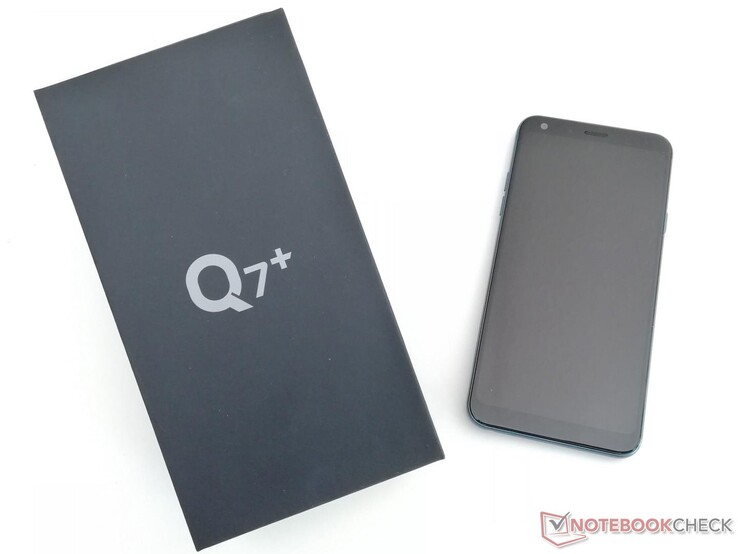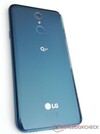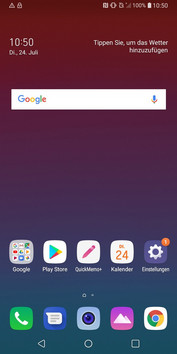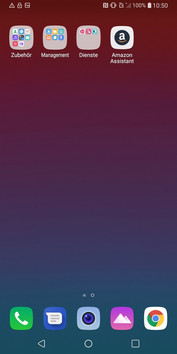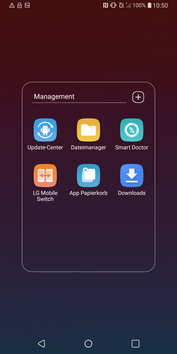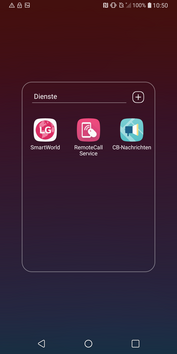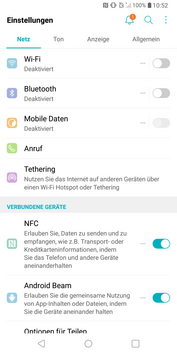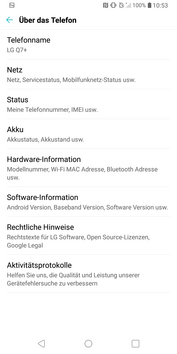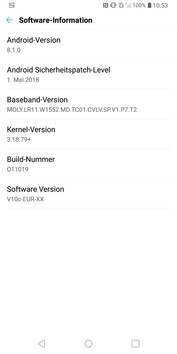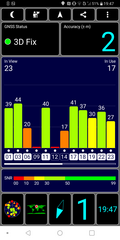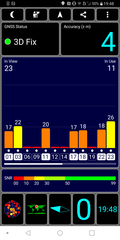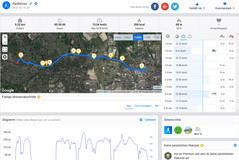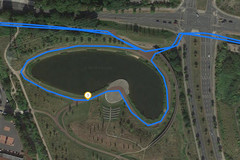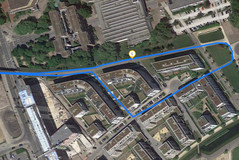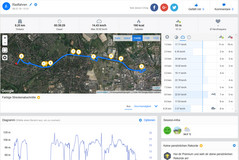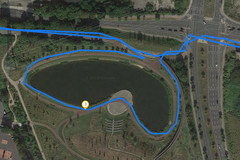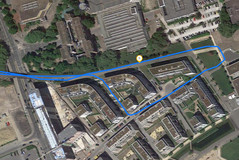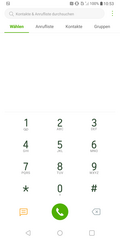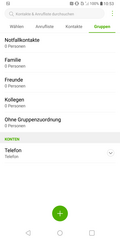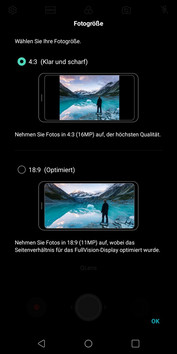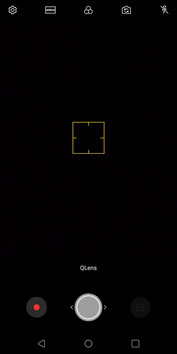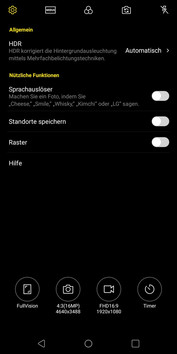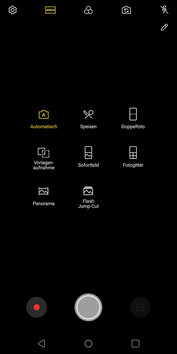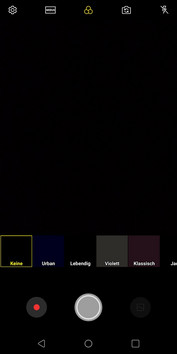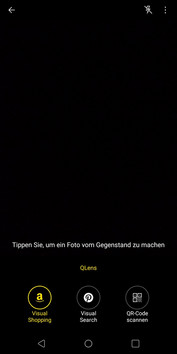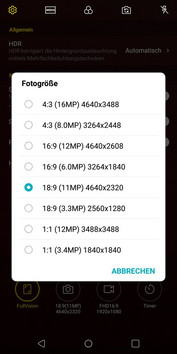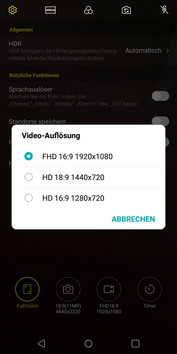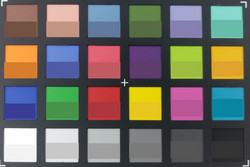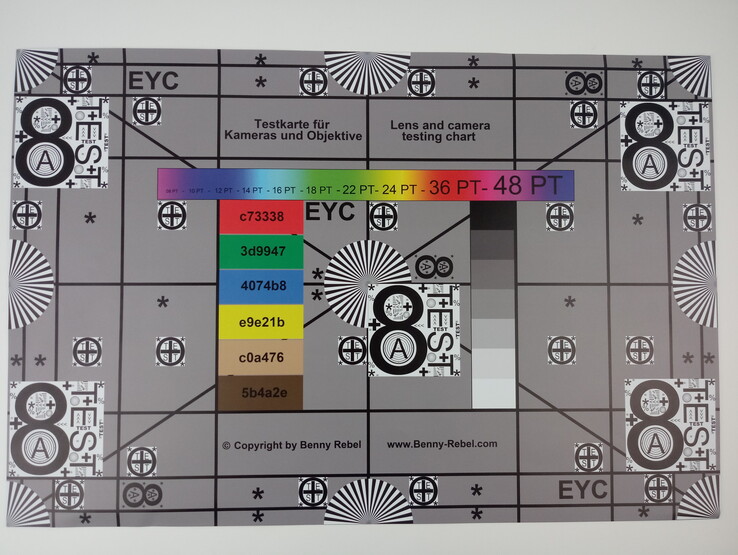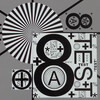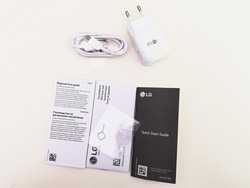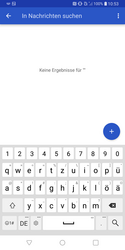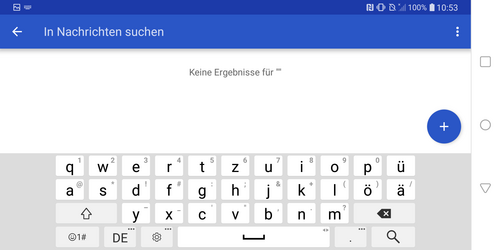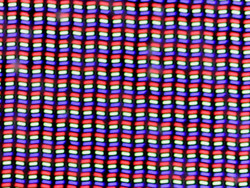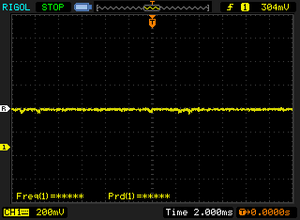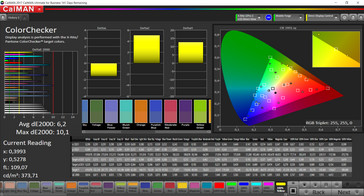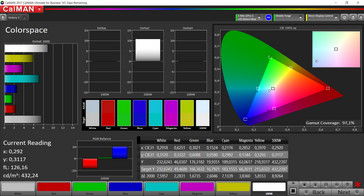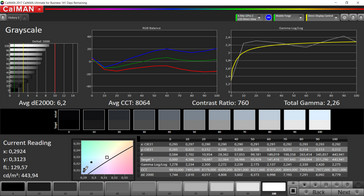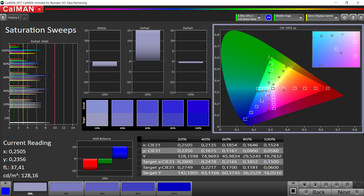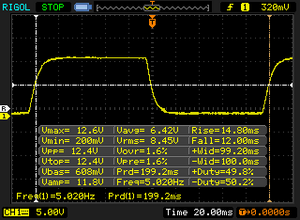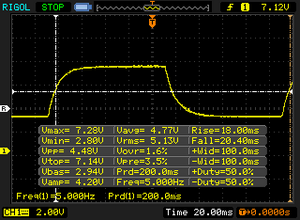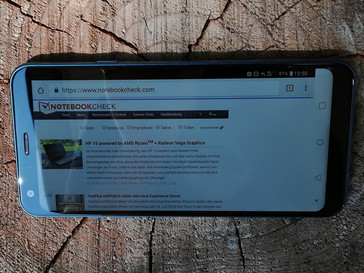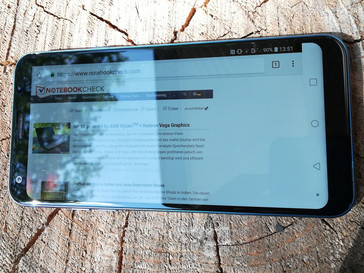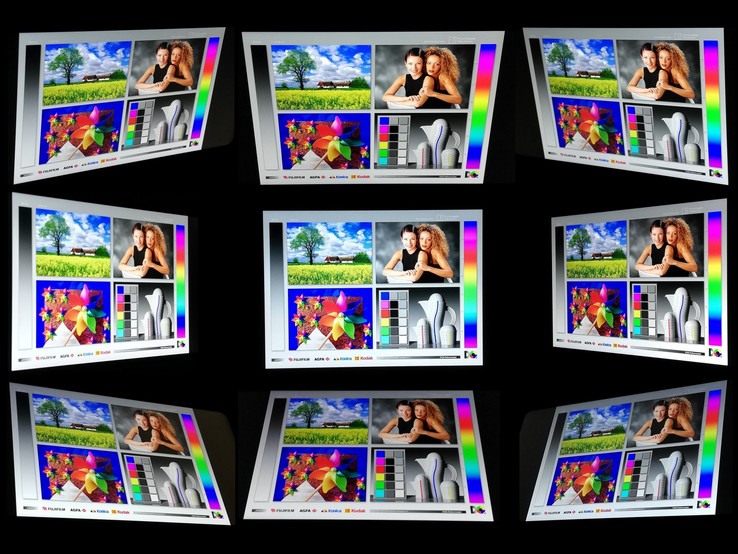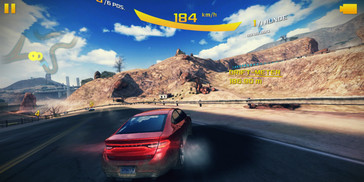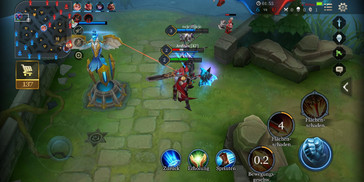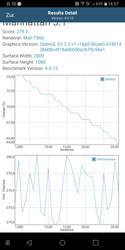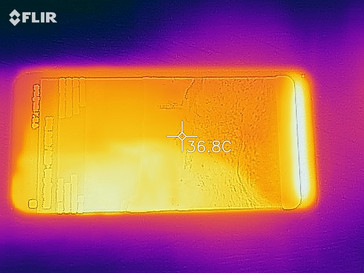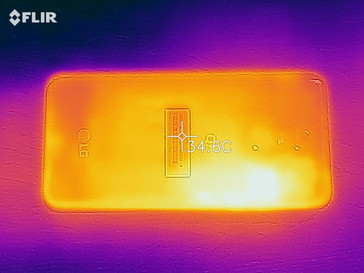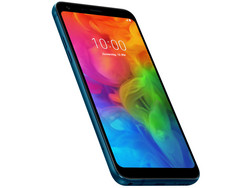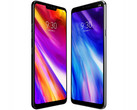LG Q7 Plus Smartphone Review
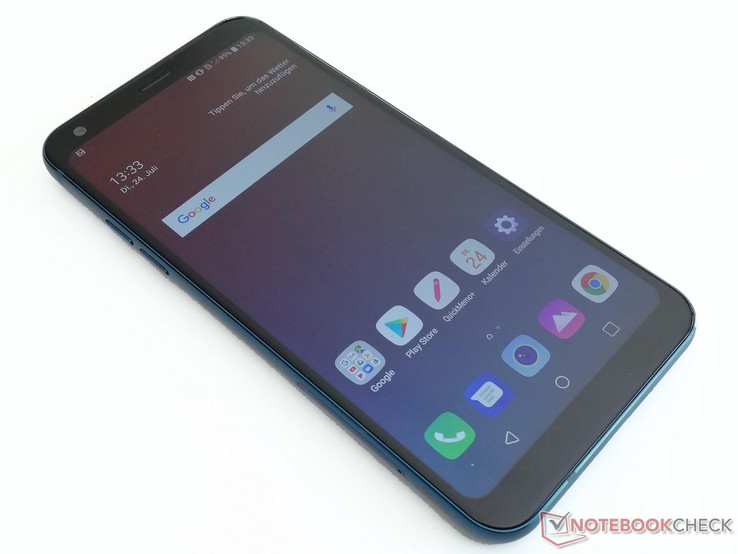
LG's Q7 smartphone family currently has three members: the Q7a, the Q7 and the Q7 Plus. All the devices are equipped with a 5.5-inch display in 18:9 format and a resolution of 2160x1080 pixels. Unlike their external appearance, the three mid-range smartphones differ in their internal hardware features. Our test device, the Q7 Plus, offers the strongest performance in the Q7 family. A Mediatek MT6750 SoC and an ARM Mali T860 MP2 graphics unit form the foundation, joined by 4 GB of RAM and 64 GB of flash storage.
With this hardware configuration and a price of around 400 Euros (~$470), the LG Q7 Plus steps into the arena. In our review, we will compare the Q7 with similarly priced smartphones, including the Blackberry Motion, the Asus Zenfone 4, the BQ Aquaris X2 Pro and Nubia's Z17 mini.
Case - Smartphone with IP68 certification
LG houses the Q7 Plus in a metal case, coated with an acrylic-like glass finish on the back side. The fingerprint sensor and simple main camera are located on the back. The sides of the device are also made of metal and feature the physical buttons, which sit securely in their housing.
The whole case is IP68-certified, meaning it is dust-proof and waterproof. The MIL-STD 810G military standard should also ensure that the Q7 Plus is shock-resistant. Our test device scratched easily on the back side, though this does not influence its functionality. Apart from that, the LG smartphone is very robust and well-manufactured. When it comes to colors, potential buyers are limited to one option: "Moroccan Blue".
Connectivity - Mid-range smartphone from LG
The Q7 Plus offers users mid-range hardware components. The Mediatek MT6750 SoC enables the system to run smoothly. This chip is supported by an ARM Mali T860 MP2 graphics unit, 4 GB of RAM and 64 GB of eMMC flash storage. A USB Type-C port serves as the connection for charging the device and transferring data according to the USB 2.0 standard. Because the smartphone is OTG capable, it can provide energy to external devices.
External speakers or a headset can be connected via Bluetooth 4.2 or the 3.5 mm jack. A slot on the left side of the smartphone is equipped to house a nanoSIM card and a microSD card. The latter can expand the available storage space by up to 2 TB. The user's data is protected by the LG Q7 Plus's fingerprint reader, located on the back of the device.
Software - Modern system with useful extras
Buyers of the LG Q7 Plus can expect a fairly "pure" Android 8.1 system with security patches dated from May 1, 2018. LG's customizations are primarily hidden in the background—for example in the structure of the settings menu. Here, users have direct access to the smartphone's various connections and can switch them on and off. This menu also gives easy access to LG's proprietary features such as "LG Air Drive", "DTS:X 3D" and "KnockOn".
LG was quite sparing when it comes to preinstalled apps, but the Amazon Assistant is present on start-up and can only be deactivated. All the other programs expand the smartphone's functionality with valuable and helpful tools.
Communication and GPS - LG Q7 Plus with mediocre WLAN performance
The LG smartphone can establish wireless connections on GSM, 3G and LTE networks. The latter supports LTE Cat. 6, which enables download rates of up to 300 Mb/s and upload speeds of up to 50 Mb/s. LG put a region lock on the Q7+, meaning a device purchased in Europe can only be used in the EU. Notably, the smartphone only supports dual GSM and two 3G bands.
The Q7 Plus can also establish WLAN connections on the 2.4 GHz band, though only according to the comparatively slow standards b, g and n. This is directly reflected in the results from our WLAN data transfer speed measurements. For a device in this price bracket, the LG Q7 Plus is very slow and performs more or less on par with a 120-Euro device (~$139). At a data transfer rate of just 55 Mb/s, our test device takes last place in the comparison list.
| Networking | |
| iperf3 transmit AX12 | |
| BQ Aquaris X2 Pro | |
| Asus ZenFone 4 ZE554KL | |
| Nubia Z17 mini | |
| BlackBerry Motion | |
| LG Q7 Plus | |
| iperf3 receive AX12 | |
| BlackBerry Motion | |
| Nubia Z17 mini | |
| Asus ZenFone 4 ZE554KL | |
| BQ Aquaris X2 Pro | |
| LG Q7 Plus | |
We used the GPS Test app to determine how accurately the LG Q7 Plus can position itself. The results show that even indoors, the smartphone can ascertain its position with an accuracy of up to four meters. Outdoors, the accuracy improves to just two meters.
After taking these base accuracy measurements, we took the smartphone and our Garmin Edge 500 reference device on our obligatory bike ride to determine how well the Q7 Plus performs in the realm of navigation. The differences between the recorded paths were minimal, attesting to the LG smartphone's aptitude for navigation-related tasks.
Phone Function and Call Quality - LG smartphone with clear sound
LG's telephone app on the Q7 Plus is almost exactly the same as Google's standard app. This program enables users to easily access contacts, groups, call lists and the number pad. In the menu, users can set the telephone as an object on the home screen, shortening the time it takes to access this primary function.
During conversations, our test device produces a pleasantly clear sound at a good volume. The microphone filters out background noise reliably, making it possible for both sides to understand each other well. In our experience, the phone's reception remains fairly stable, even in areas with poor network coverage. The speakerphone function also works well, though it has a hard time drowning out even a moderate level of background noise.
Cameras - LG Q7Lens in the Q7 Plus
LG chose to equip the Q7 Plus with a 16 MP main camera and an 8 MP front camera. Selfies captured by the front camera are moderately good. If the fixed focus does not function perfectly, the image is blurry. The optional portrait mode only changes the level of sharpness in the background.
The main camera has considerably more to offer and takes solid photos of the user's surrounding environment. With PDAF, objects come into focus quickly. The QLens AI is designed to recognize image content and offer information on the objects pictured.
The Q7 Plus' camera takes good panorama shots, though the details look somewhat blurry and the colors are a little too light. Objects are clearly distinguished from each other; the only flaw here is that within dark areas, color differences are hardly recognizable. Close-ups are rich in detail and elements are well-defined. But here as well, colors look somewhat pale and content in dark areas is easily lost, especially around the edges of the frame. The mediocre imaging performance in dark areas of an image is also reflected in the quality of pictures taken in low light. Objects quickly disappear into darkness and are hardly recognizable.
LG gives smartphone photographers very few settings options. Apart from the various modes, the only options available are filters and resolution. The advertised QLens function is essentially image recognition that searches for the photographed object on Amazon or Pinterest. In our tests, this function only worked moderately well—many of the objects we scanned were not found.
Video recordings are subject to similar limitations. The image stabilizer prevents videos from shaking significantly, but we think it could compensate for movement a little more.
We used the ColorChecker Passport program to test the color accuracy of the Q7 Plus' camera. The results corroborate the impression we got from our test shots. Colors turn out too light, and dark gray and black tones look somewhat too dark.
In a controlled lighting environment, the LG Q7+ was able to take a detailed snapshot of our test chart. Fine structures remain largely recognizable, only blurring a little in the corners of the photo. Toward the lower corners, the image becomes substantially paler.
Accessories and Warranty - 24 months of warranty coverage for the LG Q7+
The LG Q7 Plus' box contains just a USB power supply with a matching USB Type-C cable and a SIM ejector tool. LG does not offer accessories tailored to the Q7+, but third-party manufacturers sell cases, skins and much more.
Buyers of the Q7 Plus will receive a 24-month warranty from LG. Please see our Guarantees, Return policies and Warranties FAQ for country-specific information.
Input Devices and Operation - Smartphone with fast fingerprint sensor
For text and numerical input, the LG Q7 Plus is equipped with the LG keyboard app. The functionality of this app is comparable to that of Google's GBoard, enabling users to type texts quickly and easily. The size of the keyboard and various convenience features can be customized. The touchscreen reacts to touch input immediately and reliably. The position sensor takes a moment to rotate the smartphone's image content.
In addition to the unlocking features offered in the Q7 Plus' software, users can also utilize the fingerprint sensor on the back of the device. This sensor reacts faster than the time it takes to input a pattern or a PIN. Even if the registered finger touches the surface a little askew, the smartphone recognizes the fingerprint reliably.
Display - Low-contrast display on the LG Q7 Plus
LG chose to equip the Q7 Plus with a 5.5-inch IPS panel. This panel has a resolution of 2160x1080 pixels and an average brightness level of around 420 cd/m². These specs are acceptable for a smartphone in this price bracket but weak enough to place it in the lower mid-range compared to the competition. The evenness of the brightness distribution is also below average at 89%. Here, the Q7+ lands in last place among the competitors.
| |||||||||||||||||||||||||
Brightness Distribution: 89 %
Center on Battery: 431 cd/m²
Contrast: 743:1 (Black: 0.58 cd/m²)
ΔE ColorChecker Calman: 6.2 | ∀{0.5-29.43 Ø4.78}
ΔE Greyscale Calman: 6.2 | ∀{0.09-98 Ø5}
97.1% sRGB (Calman 2D)
Gamma: 2.26
CCT: 8064 K
| LG Q7 Plus IPS, 2160x1080, 5.5" | BQ Aquaris X2 Pro LTPS, 2160x1080, 5.7" | Nubia Z17 mini IPS, 1920x1080, 5.2" | BlackBerry Motion IPS, 1920x1080, 5.5" | Asus ZenFone 4 ZE554KL IPS, 1920x1080, 5.5" | |
|---|---|---|---|---|---|
| Screen | 30% | -5% | -2% | 39% | |
| Brightness middle (cd/m²) | 431 | 675 57% | 405 -6% | 326 -24% | 656 52% |
| Brightness (cd/m²) | 419 | 650 55% | 406 -3% | 318 -24% | 634 51% |
| Brightness Distribution (%) | 89 | 92 3% | 91 2% | 94 6% | 93 4% |
| Black Level * (cd/m²) | 0.58 | 0.46 21% | 0.61 -5% | 0.32 45% | 0.4 31% |
| Contrast (:1) | 743 | 1467 97% | 664 -11% | 1019 37% | 1640 121% |
| Colorchecker dE 2000 * | 6.2 | 5.9 5% | 6.5 -5% | 6.3 -2% | 5.3 15% |
| Colorchecker dE 2000 max. * | 10.1 | 9.5 6% | 9.3 8% | 11.3 -12% | 7.8 23% |
| Greyscale dE 2000 * | 6.2 | 6.6 -6% | 7.4 -19% | 8.8 -42% | 5.2 16% |
| Gamma | 2.26 97% | 2.36 93% | 2 110% | 2.59 85% | 2.22 99% |
| CCT | 8064 81% | 7846 83% | 8329 78% | 8920 73% | 7905 82% |
* ... smaller is better
Screen Flickering / PWM (Pulse-Width Modulation)
| Screen flickering / PWM not detected | |||
In comparison: 53 % of all tested devices do not use PWM to dim the display. If PWM was detected, an average of 8101 (minimum: 5 - maximum: 343500) Hz was measured. | |||
Further measurements of the LG Q7 Plus' display reveal a contrast ratio of 743:1 and a black value of 0.58. These results are also below average and have an adverse effect on both colors and blacks. Colors are not clearly distinguished from each other, and blacks have somewhat of a grayish cast. In addition, our CalMAN measurements show that images are proportionally higher in blue tones.
Display Response Times
| ↔ Response Time Black to White | ||
|---|---|---|
| 26.8 ms ... rise ↗ and fall ↘ combined | ↗ 14.8 ms rise | |
| ↘ 12 ms fall | ||
| The screen shows relatively slow response rates in our tests and may be too slow for gamers. In comparison, all tested devices range from 0.1 (minimum) to 240 (maximum) ms. » 66 % of all devices are better. This means that the measured response time is worse than the average of all tested devices (20.2 ms). | ||
| ↔ Response Time 50% Grey to 80% Grey | ||
| 38.4 ms ... rise ↗ and fall ↘ combined | ↗ 18 ms rise | |
| ↘ 20.4 ms fall | ||
| The screen shows slow response rates in our tests and will be unsatisfactory for gamers. In comparison, all tested devices range from 0.165 (minimum) to 636 (maximum) ms. » 56 % of all devices are better. This means that the measured response time is worse than the average of all tested devices (31.6 ms). | ||
Outdoors the LG Q7 Plus can be used without a problem, as long as the user avoids direct sunlight. In the shade, screen content is easy to read, and reflections from objects in the surrounding environment are not excessive. In bright spaces, the LG smartphone's display brightness is insufficient for viewing the screen content in the face of bright light and surface reflections.
The Q7 Plus' IPS panel has extremely stable viewing angles. As a result, users can view the display comfortably from almost any angle. As long as there are no reflections from the surrounding environment obscuring the display, the user always has a clear view of the LG smartphone's screen content, even from less than ideal vantage points.
Performance - LG Q7+ with mediocre performance
In the LG Q7 Plus, a Mediatek MT6750 SoC and an ARM Mali T860 MP2 GPU enable the Android system to run smoothly. The two processors are joined by 4 GB of RAM and 64 GB of eMMC flash storage. This hardware configuration is commonly available in mid-range smartphones, but it cannot quite fulfill our expectations of a device that costs 400 Euros (~$470).
Strictly speaking, the Q7+ is equipped with an MT6750S—but unfortunately the manufacturer has not clarified the difference between this chip and an MT6750. The results from our benchmark tests indicate that the GPU throttles somewhat, given that the MT6750S obtains substantially worse results than the MT6750 in the GFXBench Manhattan Test, for example.
Even so, the benchmarks show that the Q7+'s performance is still better than those of other devices with an MT6750 on average. Compared to other smartphones in its price bracket, however, the LG smartphone lags significantly behind the competition and takes last place in our comparison list in almost every portion of these tests.
| AnTuTu v6 - Total Score (sort by value) | |
| LG Q7 Plus | |
| BQ Aquaris X2 Pro | |
| Nubia Z17 mini | |
| BlackBerry Motion | |
| Asus ZenFone 4 ZE554KL | |
| Average Mediatek MT6750S (44064 - 45829, n=2) | |
| AnTuTu v7 - Total Score (sort by value) | |
| LG Q7 Plus | |
| BQ Aquaris X2 Pro | |
| Asus ZenFone 4 ZE554KL | |
| Average Mediatek MT6750S (52855 - 56626, n=2) | |
| PCMark for Android | |
| Work performance score (sort by value) | |
| LG Q7 Plus | |
| BQ Aquaris X2 Pro | |
| Nubia Z17 mini | |
| Asus ZenFone 4 ZE554KL | |
| Average Mediatek MT6750S (3969 - 4101, n=2) | |
| Work 2.0 performance score (sort by value) | |
| LG Q7 Plus | |
| BQ Aquaris X2 Pro | |
| Nubia Z17 mini | |
| BlackBerry Motion | |
| Asus ZenFone 4 ZE554KL | |
| Average Mediatek MT6750S (n=1) | |
| GFXBench 3.1 | |
| on screen Manhattan ES 3.1 Onscreen (sort by value) | |
| LG Q7 Plus | |
| BQ Aquaris X2 Pro | |
| Nubia Z17 mini | |
| BlackBerry Motion | |
| Asus ZenFone 4 ZE554KL | |
| Average Mediatek MT6750S (4.5 - 4.5, n=2) | |
| Average of class Smartphone (11 - 166, n=157, last 2 years) | |
| 1920x1080 Manhattan ES 3.1 Offscreen (sort by value) | |
| LG Q7 Plus | |
| BQ Aquaris X2 Pro | |
| Nubia Z17 mini | |
| BlackBerry Motion | |
| Asus ZenFone 4 ZE554KL | |
| Average Mediatek MT6750S (4.7 - 4.7, n=2) | |
| Average of class Smartphone (8.4 - 413, n=156, last 2 years) | |
| Lightmark - 1920x1080 1080p (sort by value) | |
| Asus ZenFone 4 ZE554KL | |
| Basemark ES 3.1 / Metal - offscreen Overall Score (sort by value) | |
| Asus ZenFone 4 ZE554KL | |
| Average of class Smartphone (205 - 7731, n=35, last 2 years) | |
The same general trend continues in the browser benchmarks. Here, too, the LG Q7 Plus performs substantially worse than the competing devices on our comparison list. In everyday use, however, the LG smartphone still offers a good browsing experience. The system loads websites quickly and only needs a little longer to load media content.
| JetStream 1.1 - Total Score | |
| BQ Aquaris X2 Pro (Chrome 67) | |
| Nubia Z17 mini (Chrome 63) | |
| Asus ZenFone 4 ZE554KL (Chrome 62) | |
| BlackBerry Motion | |
| Average Mediatek MT6750S (18.7 - 19.2, n=2) | |
| LG Q7 Plus (Chrome 67) | |
| Octane V2 - Total Score | |
| Average of class Smartphone (2228 - 121337, n=197, last 2 years) | |
| BQ Aquaris X2 Pro (Chrome 67) | |
| Nubia Z17 mini (Chrome 63) | |
| BlackBerry Motion | |
| Asus ZenFone 4 ZE554KL (Chrome 62) | |
| Average Mediatek MT6750S (3422 - 3474, n=2) | |
| LG Q7 Plus (Chrome 67) | |
| Mozilla Kraken 1.1 - Total | |
| LG Q7 Plus (Chrome 67) | |
| Average Mediatek MT6750S (13203 - 13671, n=2) | |
| Asus ZenFone 4 ZE554KL (Chrome 62) | |
| BlackBerry Motion | |
| Nubia Z17 mini (Chrome 63) | |
| BQ Aquaris X2 Pro (Chrome 67) | |
| Average of class Smartphone (257 - 28190, n=154, last 2 years) | |
| WebXPRT 2015 - Overall | |
| BQ Aquaris X2 Pro (Chrome 67) | |
| Asus ZenFone 4 ZE554KL (Chrome 62) | |
| Average Mediatek MT6750S (70 - 71, n=2) | |
| LG Q7 Plus (Chrome 67) | |
* ... smaller is better
The Q7 Plus' internal storage can keep pace with the results achieved by similar devices. The internal microSD card reader in particular scores points for its good write and read speeds. With our Toshiba Exceria Pro M501 reference memory card, the LG smartphone may not be able to outdo the competition, but its performance is solid.
The internal storage offers users around 50 GB of free storage space and can be expanded by up to 2 TB with a microSD card. However, microSD cards can only be used to store photos, music and other files. It is not possible to reformat the card as internal storage, nor can the user store apps there.
| LG Q7 Plus | BQ Aquaris X2 Pro | Nubia Z17 mini | BlackBerry Motion | Asus ZenFone 4 ZE554KL | Average 64 GB eMMC Flash | Average of class Smartphone | |
|---|---|---|---|---|---|---|---|
| AndroBench 3-5 | 17% | 14% | 10% | 17% | 43% | 1302% | |
| Sequential Read 256KB (MB/s) | 235.9 | 280.8 19% | 267 13% | 285.5 21% | 287.4 22% | 277 ? 17% | 2228 ? 844% |
| Sequential Write 256KB (MB/s) | 186.6 | 204.8 10% | 143.8 -23% | 92.7 -50% | 205.3 10% | 178.4 ? -4% | 1852 ? 892% |
| Random Read 4KB (MB/s) | 35.8 | 51.3 43% | 60 68% | 67.3 88% | 68.6 92% | 60.7 ? 70% | 296 ? 727% |
| Random Write 4KB (MB/s) | 11.91 | 15.43 30% | 15.9 34% | 11.61 -3% | 7.59 -36% | 33.8 ? 184% | 339 ? 2746% |
| Sequential Read 256KB SDCard (MB/s) | 81.4 ? | 83.3 ? 2% | 78 ? -4% | 84.7 ? 4% | 86.9 ? 7% | 77.4 ? -5% | |
| Sequential Write 256KB SDCard (MB/s) | 62.2 ? | 61.1 ? -2% | 58.8 ? -5% | 61.2 ? -2% | 66.5 ? 7% | 58.3 ? -6% |
Games - LG smartphone for casual games
The ARM Mali T860 MP2 graphics unit in the LG Q7 Plus is a simple GPU for tasks that require little in the way of graphics performance. Casual games and older titles run smoothly with the GPU, but games like Asphalt 8 only play fluidly at low settings. The MOBA Arena of Valor only ran at low graphics settings as well and even then we saw occasional drops in the frame rate.
The touchscreen translates all kinds of input into the game immediately and is suitable for use over an extended period. If a game requires the position sensor as a control, the user always has to keep in mind that there will be a short lag before a motion influences the game on the screen.
| Arena of Valor | |||
| Settings | Value | ||
| min | 23 fps | ||
| Asphalt 8: Airborne | |||
| Settings | Value | ||
| very low | 27 fps | ||
Emissions - Good sound for external devices
The LG Q7 Plus consistently warms to around 30 °C (86 °F) while running, and under load the temperatures can rise to up to 37 °C (98.6 °F). The surfaces do not heat up any further. While we were running the graphics-heavy GFXBench Manhattan 3.1 test, the LG Q7+ was able to maintain the same level of performance. The smartphone warmed up palpably, but it never grew hot.
(+) The maximum temperature on the upper side is 38.1 °C / 101 F, compared to the average of 35.2 °C / 95 F, ranging from 21.9 to 247 °C for the class Smartphone.
(+) The bottom heats up to a maximum of 38.1 °C / 101 F, compared to the average of 34 °C / 93 F
(+) In idle usage, the average temperature for the upper side is 30.7 °C / 87 F, compared to the device average of 32.9 °C / 91 F.
Speaker
The Q7+'s speaker offers a tone spectrum that is well-suited for voices at a comparatively good volume. Other audio outputs suffer a bit from the unbalanced mid and high tones. Users will have to do without bass tones entirely.
Bluetooth 4.2 and a 3.5 mm jack serve as connections for external audio devices. Plugs hold firmly in the jack, and in connection with LG's DTX:X-3D Surround feature, the device is able to generate a very dynamic and balanced sound. This is a substantial improvement over the internal speaker and is very well-suited for playing all kinds of media content.
LG Q7 Plus audio analysis
(+) | speakers can play relatively loud (85.5 dB)
Bass 100 - 315 Hz
(-) | nearly no bass - on average 39.2% lower than median
(±) | linearity of bass is average (9.7% delta to prev. frequency)
Mids 400 - 2000 Hz
(±) | reduced mids - on average 7.4% lower than median
(±) | linearity of mids is average (9.3% delta to prev. frequency)
Highs 2 - 16 kHz
(±) | higher highs - on average 6.7% higher than median
(±) | linearity of highs is average (9.3% delta to prev. frequency)
Overall 100 - 16.000 Hz
(-) | overall sound is not linear (31.7% difference to median)
Compared to same class
» 81% of all tested devices in this class were better, 2% similar, 16% worse
» The best had a delta of 11%, average was 35%, worst was 134%
Compared to all devices tested
» 90% of all tested devices were better, 2% similar, 8% worse
» The best had a delta of 4%, average was 24%, worst was 134%
BQ Aquaris X2 Pro audio analysis
(+) | speakers can play relatively loud (83.2 dB)
Bass 100 - 315 Hz
(-) | nearly no bass - on average 23.6% lower than median
(±) | linearity of bass is average (13.2% delta to prev. frequency)
Mids 400 - 2000 Hz
(±) | higher mids - on average 5% higher than median
(±) | linearity of mids is average (8.2% delta to prev. frequency)
Highs 2 - 16 kHz
(±) | higher highs - on average 8.1% higher than median
(+) | highs are linear (4.6% delta to prev. frequency)
Overall 100 - 16.000 Hz
(±) | linearity of overall sound is average (25.3% difference to median)
Compared to same class
» 62% of all tested devices in this class were better, 7% similar, 31% worse
» The best had a delta of 11%, average was 35%, worst was 134%
Compared to all devices tested
» 77% of all tested devices were better, 5% similar, 18% worse
» The best had a delta of 4%, average was 24%, worst was 134%
Battery Life - LG smartphone with long battery life
According to our measurements, the Q7 Plus uses an average amount of energy. In idle mode, our test device's power draw is somewhat higher than those of the devices we have selected for comparison. Under load, the LG smartphone's low energy consumption stands out compared to the competition. The power supply that comes with the device provides around 17 watts of energy, which is enough to reliably supply the Q7+ under load and charge the smartphone at the same time.
| Off / Standby | |
| Idle | |
| Load |
|
Key:
min: | |
| LG Q7 Plus 3000 mAh | BQ Aquaris X2 Pro 3100 mAh | Nubia Z17 mini 2950 mAh | BlackBerry Motion 4000 mAh | Asus ZenFone 4 ZE554KL 3300 mAh | Average Mediatek MT6750S | Average of class Smartphone | |
|---|---|---|---|---|---|---|---|
| Power Consumption | -15% | -28% | -18% | -19% | 5% | -27% | |
| Idle Minimum * (Watt) | 1 | 0.63 37% | 0.83 17% | 1.45 -45% | 0.84 16% | 0.845 ? 15% | 0.842 ? 16% |
| Idle Average * (Watt) | 1.57 | 2.16 -38% | 2.01 -28% | 2.1 -34% | 2.31 -47% | 1.635 ? -4% | 1.439 ? 8% |
| Idle Maximum * (Watt) | 1.64 | 2.18 -33% | 2.02 -23% | 2.13 -30% | 2.33 -42% | 1.685 ? -3% | 1.624 ? 1% |
| Load Average * (Watt) | 4.1 | 4.48 -9% | 5.95 -45% | 4.01 2% | 4.76 -16% | 3.66 ? 11% | 7.03 ? -71% |
| Load Maximum * (Watt) | 6.02 | 7.87 -31% | 9.65 -60% | 5.09 15% | 6.39 -6% | 5.67 ? 6% | 11.3 ? -88% |
* ... smaller is better
Battery Life
In our WLAN test, which is designed to simulate everyday use, the LG Q7 Plus' battery fulfills our expectations of a 3000 mAh model. With a run time of over 10 hours, the smartphone only lags behind competitors equipped with larger batteries. When it comes to battery life during video playback, however, the Q7+ was not able to meet our expectations. The Q7+ charges fully in less than two hours with the fast charge power supply that comes with the smartphone.
| LG Q7 Plus 3000 mAh | BQ Aquaris X2 Pro 3100 mAh | Nubia Z17 mini 2950 mAh | BlackBerry Motion 4000 mAh | Asus ZenFone 4 ZE554KL 3300 mAh | |
|---|---|---|---|---|---|
| Battery runtime | 12% | -19% | 31% | 35% | |
| Reader / Idle (h) | 16.3 | 22.9 40% | 27.8 71% | ||
| H.264 (h) | 7.6 | 11 45% | 11.6 53% | ||
| WiFi v1.3 (h) | 10.3 | 10.1 -2% | 8.3 -19% | 13.5 31% | 9.4 -9% |
| Load (h) | 3.8 | 2.4 -37% | 4.8 26% |
Pros
Cons
Verdict - LG Q7 Plus fails to meet expectations
After a thorough review, the Q7 Plus left us with mixed impressions. On the one hand, the smartphone offers some strong sales points: very good battery life, the option to expand its storage space by up to 2 TB, and excellent sound quality on external speakers. On the other hand, the performance is much too low for a device that costs 400 Euros (~$470), and the much-advertised QLens feature proves to be nothing more than a simple Amazon image search.
Despite its good battery life, LG's Q7 Plus is a smartphone that cannot justify its 400-Euro price tag (~$470).
If you want to use your smartphone as a mini multimedia center and only intend to take the occasional decent-quality snapshot, considering that most apps run without any issues, you can go ahead and buy this device with confidence. However, buyers who attach importance to good system performance and may even want to play more graphics-heavy games would be better off taking a look at the competition.
LG Q7 Plus
- 07/30/2018 v6 (old)
Mike Wobker




